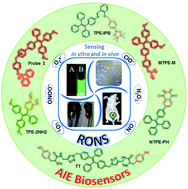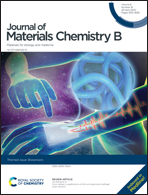Aggregation-induced emission luminogens for RONS sensing
Abstract
Reactive oxygen and nitrogen species (RONS) are an important class of oxidative stress mediators which are tightly associated with several diseases. Therefore, it is important to develop an accurate and reliable method for the in situ monitoring of biologically relevant RONS. Fluorescent bioprobes exhibit remarkable sensing properties such as easy operation, rapid response and good sensitivity, and thus have emerged as powerful tools in diverse biomedical applications. Benefiting from remarkable photophysical advantages like large Stokes’ shifts, high signal-to-noise ratios and excellent photostability, aggregation-induced emission (AIE) luminogens (AIEgens) show unique superiority for RONS sensing and are widely applied in diverse biomedical applications. In this review, we first introduce the concept of RONS and the sensing principles of RONS by AIE bioprobes. Then we summarize the current state of AIEgens for RONS sensing with some representative examples. Finally, we present a perspective on the future development of RONS sensing based on AIEgens. We hope our review can inspire more endeavors in this fascinating area, further promoting the use of AIEgens in diagnostic analysis and therapy.

- This article is part of the themed collection: Biosensors


 Please wait while we load your content...
Please wait while we load your content...